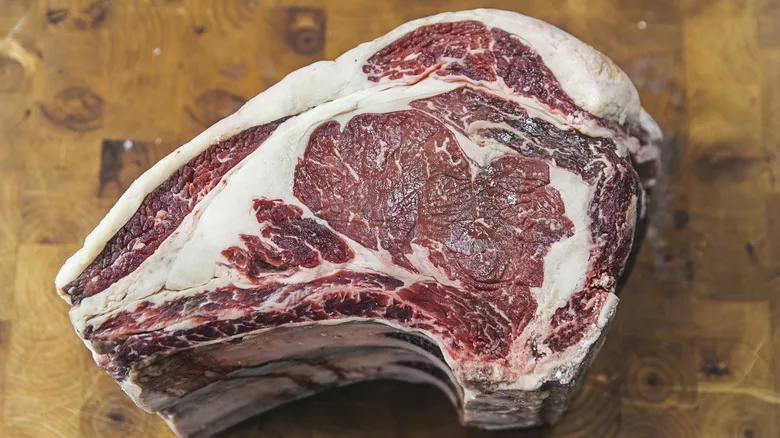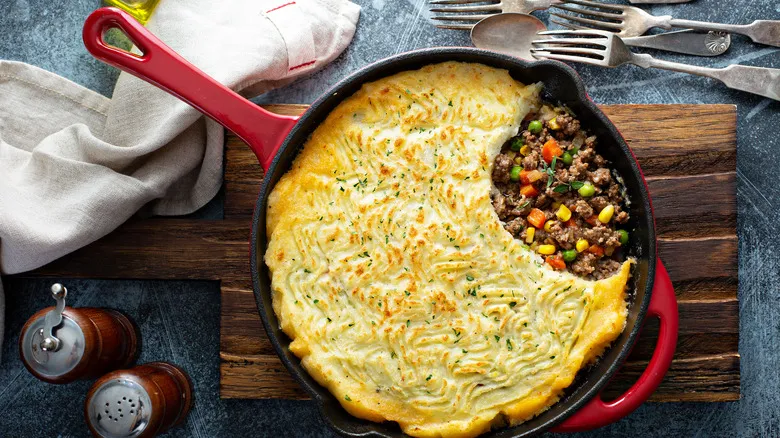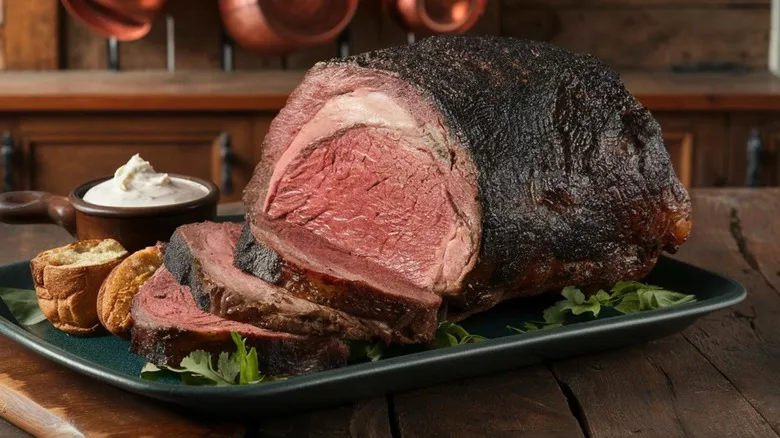Consider prime rib specifics prior to shopping

There's no doubt about it; preparing a whole prime rib is quite the undertaking. However, if you choose the right cut from the start, the roasting process will be much smoother. First, decide if you prefer bone-in or boneless. While the bone does require a bit more carving, it contributes to a juicier interior. Additionally, keeping the ribs intact simplifies portioning: a single bone for every two people is a sensible guideline. As for weight, plan on about a pound per person.
With those basics covered, it's time to consider the quality of the beef. The term "prime" can be a bit misleading; some might assume it refers to the USDA inspection grade. However, like steaks, prime rib is categorized by the top beef grades: prime, choice, and select. For the most flavorful roast, seek out a prime-graded prime rib. You can find prime beef at Costco, but if you can't locate the right cut—or if you're looking for a more budget-friendly option—opting for the choice grade is a good alternative. For an extra guarantee of quality, consider grass-fed beef, although this classification is less strictly regulated. Once you have your criteria sorted, you're well on your way to a perfectly slow-cooked prime rib.
Recommended

9 Things About Caesar Salad You Probably Didn't Know

The Worthwhile Reason To Get To Know Your Grocery's Deli Counter Workers

The Complete History Of Shepherd's Pie

The Grocery Product Label You Need To Read If You Really Want To Save Money
Next up

